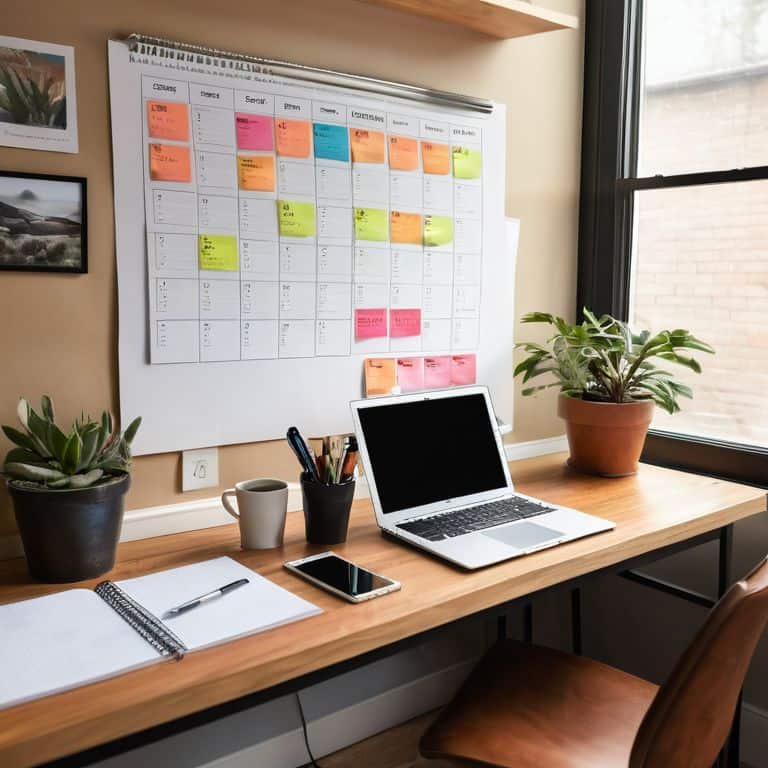I still remember the day I decided to start a blog of my own – it was a mix of excitement and overwhelming confusion. Everyone around me seemed to have a different opinion on how to start a blog, from choosing the perfect theme to mastering complex SEO strategies. But as someone who’s passionate about making the technical world accessible, I’ve learned that it’s not about the fancy themes or the latest trends – it’s about sharing your ideas and connecting with others. If you’re looking for a straightforward guide on how to start a blog, you’re in the right place.
In this article, I’ll walk you through the simple, practical steps to get your blog up and running. You won’t find any get-rich-quick schemes or magical formulas here – just honest, step-by-step advice on how to build a blog that truly reflects your voice and vision. We’ll cover the essentials, from choosing the right platform to crafting engaging content, and I’ll share some of my own experiences to illustrate the points. By the end of this guide, you’ll have a clear understanding of how to start a blog that resonates with your audience, and you’ll be ready to take the first step towards sharing your ideas with the world.
Table of Contents
Guide Overview: What You'll Need

Total Time: 1 hour 30 minutes
Estimated Cost: $10 – $30
Difficulty Level: Easy
Tools Required
- Computer with internet connection
Supplies & Materials
- Domain Name Registration optional, but recommended for custom domain
- Web Hosting Service required for hosting blog content
Step-by-Step Instructions
- 1. First, choose a niche for your blog – this is the topic or theme that you’ll be focusing on. It could be anything from cooking, to travel, to technology, or even woodworking, which is one of my personal favorites. Take some time to think about what you’re passionate about and what you’d like to share with the world.
- 2. Next, register a domain name that reflects your blog’s niche or theme. This will be the address that people type into their browsers to access your site, so make sure it’s easy to remember and relevant to your content. You can use a domain registrar like GoDaddy or Namecheap to find and register your domain.
- 3. Now, select a web hosting service that will store your blog’s files and make them accessible to the public. There are many options available, including Bluehost, SiteGround, and HostGator, so do some research to find the one that best fits your needs and budget.
- 4. After you’ve registered your domain and chosen a web host, it’s time to install a Content Management System (CMS) like WordPress or Joomla. This will provide you with a user-friendly interface for creating and managing your blog’s content, and most web hosts offer 1-click installation options to make the process easy.
- 5. With your CMS installed, you can start customizing your blog’s design by choosing a theme or template that reflects your brand and niche. Most CMS platforms offer a wide range of free and paid themes to choose from, so take some time to browse through the options and find one that you like.
- 6. Next, set up the necessary pages for your blog, such as an about page, contact page, and homepage. These pages will provide your visitors with important information about you and your blog, and will help to establish your credibility and trust with your audience.
- 7. Now that your blog is set up and looking good, it’s time to start creating content. This is the fun part – you get to share your ideas, experiences, and expertise with the world. Start by brainstorming a list of topics that you’d like to cover, and then begin writing and publishing your posts.
- 8. Finally, promote your blog to get the word out and attract some visitors. You can do this by sharing your posts on social media, engaging with other bloggers in your niche, and optimizing your content for search engines like Google. Remember, building a successful blog takes time and effort, so be patient and stay committed to your goals.
Starting Your Blog

As you begin creating engaging content for your blog, remember that consistency is key. Developing a schedule and sticking to it will help you build a loyal following and keep your readers engaged. When it comes to blog post ideas for beginners, don’t be afraid to think outside the box and explore topics that are relevant to your niche.
One of the most important aspects of blogging is search engine optimization tips. Understanding how to optimize your posts for search engines can help increase your visibility and drive more traffic to your site. This can be achieved by using relevant keywords, meta descriptions, and optimizing your images.
When customizing your blog, consider customizing WordPress themes to give your site a unique look and feel. Additionally, understanding blog analytics will help you track your progress and make data-driven decisions to improve your content and engagement. By focusing on these key areas, you’ll be well on your way to building a successful blog that resonates with your audience.
Blogging for Business Beginners
Now that we’ve covered the basics of starting your blog, let’s dive into “Blogging for Business Beginners”. If you’re looking to use your blog for business purposes, there are a few extra things to consider. You’ll want to think about your brand identity and how your blog will fit into your overall business strategy.
As a business blogger, your goal is to attract and engage with your target audience. This means creating content that’s not only high-quality and relevant, but also consistent with your brand’s voice and tone. Don’t worry if this sounds overwhelming – we’ll break it down into manageable steps, and before you know it, you’ll be using your blog to grow your business and connect with your customers.
Creating Engaging Content Tips
Now that you’ve set up your blog, it’s time to think about the content. Creating engaging content is key to attracting and keeping readers. To start, consider what you’re passionate about and what problems you can help solve for your audience. Make a list of topics that excite you and that you feel knowledgeable about.
Remember, your goal is to provide value to your readers, so think about what they might find interesting or useful. Keep your tone friendly and approachable, and don’t be afraid to add a personal touch to your posts. By being authentic and helpful, you’ll be well on your way to building a loyal following.
5 Essential Tips to Get Your Blog Up and Running

- Lay the Foundation: Define Your Niche and Target Audience to Create Content That Resonates
- Choose Your Platform Wisely: Select a Reliable Web Host and User-Friendly Blogging Platform
- Design with Purpose: Create a Visually Appealing and Mobile-Friendly Website That Reflects Your Brand
- Develop a Content Strategy: Plan and Schedule Your Posts to Ensure Consistency and Engagement
- Optimize for Success: Learn the Basics of SEO to Increase Your Blog’s Visibility and Reach a Wider Audience
Key Takeaways for Starting Your Blog
Breaking down the process of starting a blog into simple, manageable steps can make the experience less overwhelming and more enjoyable, allowing you to focus on creating high-quality content
Choosing the right platform and customizing your blog to reflect your brand or personal style is crucial for attracting and engaging with your target audience
Consistently creating engaging content and promoting your blog through various channels are essential for growing your audience and achieving your blogging goals, whether personal or professional
Starting Your Blogging Journey
The moment you decide to start a blog is the moment you unlock your potential to share your voice with the world – don’t be afraid to take the first step, because it’s often the smallest steps that lead to the greatest journeys.
David Grant
Conclusion: You're Now Ready to Start Your Blogging Journey
As we’ve gone through the steps to start a blog, remember that creating engaging content is key to attracting and retaining an audience. We’ve covered the basics of setting up your blog, from choosing a platform to designing your site, and we’ve also touched on the importance of developing a content strategy. By following these steps and tips, you’ll be well on your way to establishing a successful blog that showcases your unique voice and perspective. Don’t be afraid to experiment and try new things – it’s all part of the learning process.
As you embark on this exciting journey, keep in mind that consistency is crucial. Regularly posting high-quality content will help you build a loyal following and establish your authority in your niche. Don’t get discouraged if you encounter setbacks or make mistakes – they’re an opportunity to learn and grow. With patience, persistence, and a willingness to learn, you can turn your blog into a powerful platform for sharing your ideas and connecting with like-minded individuals. So, go ahead, take the first step, and watch your blog flourish over time.
Frequently Asked Questions
What are the most important things to consider when choosing a domain name for my blog?
When choosing a domain name, consider a few key things: make it easy to remember, keep it short and simple, and ensure it’s relevant to your blog’s content. Think of it like crafting a precise wooden joint – it needs to fit perfectly to hold everything together.
How do I decide on a niche or topic for my blog that will attract and retain an audience?
To decide on a niche, think about what you’re passionate about and what problems you can help solve for others. Ask yourself: What do I enjoy talking about? What are my hobbies or areas of expertise? What issues do I care about, and how can I provide valuable insights or solutions?
What are the essential tools and software I need to get started with blogging, and how much do they typically cost?
To get started, you’ll need a few essential tools: a computer, internet connection, and a blogging platform like WordPress or Blogger. You’ll also need a domain name and web hosting, which can cost around $10-30 per year and $50-100 per year, respectively. Additionally, consider investing in a good writing tool and image editor, like Grammarly and Canva, which offer affordable plans starting at around $10-20 per month.
